Blog articels
Buddy HomeCare: An Award-winning Innovation in Thailand
Community-based management and monitoring system for senior care.
Buddy Homecare was launched by the Foundation for Older Persons’ Development (FOPDEV) in 2012. In 2020 the social enterprise won a Healthy Aging Prize for Asian Innovation (HAPI) in the category "Technology and Innovation" for its monitoring application. In a short interview, CEO Sawang Kaewkantha explains why Buddy Homecare is so special.
The year 1999 was declared the International Year of Older Persons by the United Nations (UN). This inspired the establishment of the FOPDEV Foundation, which later initiated the Buddy Homecare (BHC) concept. After the three-year development phase, the government funded a two-year pilot project in 2015. The aim was to ensure good home care services for all the elderly, including those with a low income. The BHC program offers an inclusive solution to various problems of elderly people, as well as indigenous youth living in poverty and with limited educational opportunities in the mountains. Sawang Kaewkantha explains, "They have no chance to study because they would have to come to the city. That means it would be very expensive for the family in the village. Many of them might be exploited from outside or get cheap daily wages." These are Karen, Lahu und Hmong, minoritized ethnic groups with own language, living in northern Thailand and Myanmar. The BHC offers them training as caregivers. This way they can contribute to the well-being of seniors and get better career prospects at the same time. When the younger generation becomes financially independent, it’s a great relief for their families. BHC provides them with a three-month training course at Chiang Mai University's Faculty of Nursing. "We call them caregivers because they are not volunteers, they are paid for their work. These caregivers can share their knowledge with community volunteers, who only attend a five-day course on age care. (...) At the same time, they fulfill a supervisory function" says the BHC director, describing other advantages of the concept. In Thailand, responsibility for older people belongs to basic social norms. Many people give up their jobs to care for their family members. Sawang Kaewkantha, for example, is very happy that he can continue to work thanks to BHC caregivers. His wife had a stroke 2 years ago and has needed constant care ever since.
The successful innovation
The HAPI award was not given to the BHC project for its enormous social achievements but for the innovative use of a digital monitoring application. Years of experience in community-based care were used to develop a new monitoring system. What sets BHC's system apart from the others is its social entrepreneurial approach, which strives for a just society for all while impacting multiple target groups. Thanks to digital tools, the work can be carried out systematically and efficiently. The app includes features for conducting health screenings, creating individualized health programs, and enabling follow-up visits. The dashboard covers assessment, care program planning, care practice and data collection. Data is accessible to caregivers and volunteers, and family members can access the information in real-time. Caregivers or BHC volunteers perform basic health screenings, such as blood pressure checks, and can assist with activities of daily living, such as bathing, cutting nails and hair, and household work. Thanks to systematic recording and monitoring of health data, anomalies can be noticed and treated quickly. In addition, there is a performance evaluation of the caregivers and an overview of the state of development and the situation of the elderly.
Further development
The social impact of the project is broad and diverse. Officially, Buddy Homecare's social return is five times the government's investment. In addition, the program is highly cost-effective and sustainable because it provides both paid and free-of-charge community services. The foundation continues to pursue four strategies. "One is community and organizational development. The second is information sharing and knowledge management. And the third is networking," Sawang Kaewkantha lists and concludes, "the last point is fundraising; this is very significant because Buddy Homecare plans to expand its business model to Bangkok and other regions of the country in the future." They received a grant from the Thai company "Prueksa" for a model nursing home with ten beds. "We are working on the project together with a local church. But the goal is still to support the elderly locally in familiar surroundings for as long as we can. The retirement home is intended to be only an emergency option. Single seniors in need of care who cannot count on help from the neighborhood will be placed there."
Interview: Samira-Salomé Hüsler, Rhea Braunwalder
Text und Übersetzung: Monika Freund Schoch
Other articles:
Buddy HomeCare EN
Healthy Aging Prize for Asian Innovation EN
On the photo: The CEO of "Buddy HomeCare" Sawang Kaewkantha.

CareTable: an innovative technology for long-term inpatient care
An interview with the founder of “CareTable”, Mr. Christoph Schneeweiss
The progressive ageing of society sets major challenges for care facilities. Many new technologies are currently being developed as an attempt to provide relief in this area - one of them is the CareTable. This oversized touchscreen device has been specially developed to improve the quality of life of residents in geriatric care centers and care institutions. An interview with the founder of the dynamically growing company provides an insight into the development of CareTable, its functions, challenges and ethical considerations.
Monika Freund Schoch (MFS): Today we have the pleasure of welcoming Mr. Christoph Schneeweiss and talk about an exciting technology in the field of elderly care - the CareTable. Thank you very much for taking the time to talk to us. Can you perhaps tell us a little about the product?
Christoph Schneeweiss (CS): Yes, with pleasure. Thank you very much for having me here. I'm really pleased to be able to talk about the CareTable, a product that we launched almost four years ago. CareTable - what exactly is it? You must imagine it as an oversized tablet. It's a large touchscreen, almost like a TV, that stands on wheels and can be ergonomically adjusted in height and angle to meet the needs of residents in nursing and retirement homes. This tablet does not have the classic apps that we are familiar with from an iPhone or Android device, but rather applications specially developed for geriatric care. The range is wide: from biography work, trough sport and exercise, to entertainment in the form of games - all designed to make everyday life in care facilities more varied and enjoyable.
MFS: That sounds interesting. How was the idea for the CareTable born? What was the starting point for its development?
CS: The original idea came from a master's thesis at Martin Luther University Halle, or more precisely from the Faculty of Nursing Science. When we founded our company in 2019, we initially had something completely different in mind. We wanted to become an IT service provider for the care sector, but that didn't work out as we had hoped. Then the university approached one of our customers and suggested working with one of the students who wanted to write his master's thesis on how older people cope with a large touchscreen compared to normal tablets. We then developed a prototype, which was surprisingly well received by the residents and was used for up to four hours a day. That was a sign for us that we were on the right track, and so we continued to develop the product. Today, the CareTable is used in around 1,000 facilities in Germany, Austria, Switzerland (e.g. Zurich, Dietlikon, Wallisellen, Erlinsbach, Willisau and Spiez) and Luxembourg.
MFS: What was your role in the development of the CareTable and how has the product evolved?
CS: I am one of the two founders and created the CareTable together with Tobias Jecht. Tobias mainly takes care of customer advice and sales, while I am responsible for internal processes, product development and HR and financial issues. When developing the CareTable further, it was clear from the outset that we had to work very closely with user feedback - both from care staff and residents. This feedback made a significant contribution to designing the product in such a way that it meets the needs of care homes.
MFS: Were there any challenges or difficulties in developing the CareTable?
CS: Yes, definitely. Initially, we had little experience and a lot to learn. A big mistake at the beginning was that the first version of the CareTable was stationary - a table with four legs that was neither mobile nor adjustable in height or tilt angle. This meant that many residents, especially wheelchair users or bedridden people, were unable to use the device at all. At the beginning of 2021, we then developed a mobile, ergonomically adaptable version that is in use today. There were also only a few applications on the software side at first, but we have steadily expanded this. Our original idea was to use the CareTable primarily as a “play table”, but it quickly became clear that it had much more potential, like biography work or cognitive and physical exercise.
MFS: To what extent do the CareTable and its applications contribute to residents' quality of life?
CS: The CareTable opens completely new digital worlds for residents. It is fascinating to see that, contrary to many preconceptions, older people really enjoy working with digital devices if they are introduced to them appropriately. In care facilities, there is often a care ratio of one full-time employee for every 20 residents. This can easily lead to some residents missing out or withdrawing. The CareTable makes it possible to start an activation program that covers different interests and levels of difficulty with just a few clicks. This allows more residents to be involved in the care, which benefits both the residents and the care staff.
MFS: What challenges and limitations still exist with the CareTable today?
CS: Of course, not everything is perfect. The CareTable is a valuable tool, but it doesn't solve all the problems. One major challenge that we are currently working on is the individualization of the device. In future, it should be possible to create profiles of residents so that their personal preferences and biographies can be incorporated into the activation program. We are currently working with general levels of difficulty, but the aim is to make individual suggestions based on residents' preferences and previous activities. We would also like to further expand the range of applications, particularly in the area of sport and exercise. There will always be residents who are unable or simply unwilling to use the device due to motoric or cognitive limitations. It is therefore important to remain realistic and not raise excessive expectations.
MFS: What about the issue of data protection? Were there any concerns?
CS: Data protection is an important issue in the care sector, and of course we take that into account. There were initial concerns, particularly with applications such as video calls or the picture gallery, because they involve personal data. However, we have corresponding order data processing contracts and updated data protection declarations so that these functions can be used without hesitation. If individualization is based on resident data in the future, we will have to take another very close look at how we can ensure data protection.
MFS: Is there anything else you would like to say to our readers or listeners?
CS: Yes, it is important to me to convey a different image of old age. Technology and digitalization are also very popular in residential care for people over 80. It's wrong to generalize and say that older people have no interest in technology. On the contrary, if you introduce them to it properly, they really enjoy it. We should therefore stop excluding older people from such offers based on an outdated image of old age.
MFS: Thank you very much, Mr. Schneeweiss, for this interesting interview!
CS: Thank you.
Interview and text: Monika Freund Schoch
Translations
EN: Monika Freund Schoch
FR: Rhea Braunwalder
IT: Lisa Kortmann
Mit Unterstützung der KI
Website of the manufacturer DE
On the picture below: Christoph Schneeweiss with CareTable

D-Free: Using technology to relieve the consequences of urinary incontinence
In 2017 DFree launched a wearable ultrasound sensor that measures the bladder fullness. Through a connected app users or care givers are alerted when it is time to go to the bathroom. In 2020/2021, the wearable was tested in a pilot study of the Martin-Luther-University Halle-Wittenburg, Germany with 18 urologic patients with urinary incontinence in a period of three months (Schönburg et al. 2023). The feedback to the product was positive, even if some suggestions were made for user-friendliness. Further in 2023, DFree was tested in an in-patient setting with nurses at the University Medicine Halle, Germany (Hofstetter et al. 2023). The interview with Vice President of Marketing of DFree USA, Ty Takayanagi, shows us more about this unique wearable ultrasound sensor.
Mr. Takayanagi, what is DFree and how did it come about?
The project began in 2015, where we looked at the market for urinary incontinence and saw a huge potential. 500 million people worldwide, many of these seniors, are affected by urinary incontinence. The solutions available are pads, diapers, medication, or invasive surgeries. Our wearable device attaches to the lower abdomen and is secured with a tape. It’s connected to a smartphone-app where a number indicates how full the bladder is on a scale from 1-10. It’s kind of like an alarm clock for your bladder. When the notification threshold is reached, a notification is sent to visit the bathroom.
“It’s kind of like an alarm clock for your bladder”
Who was involved in the product development and what was their feedback?
Our Team-members are all from different fields: The CEO was a consultant in the health-care industry, and came up with the idea. Our CTO brought a lot of technical knowledge and experience. And I have a background in sales and marketing.
Before we launched the first product in 2017 there were multiple different prototypes. We tested our device with many seniors and with our main customers, nursing homes, and got feedback about what they liked and didn’t like. The first product was a big sensor with a battery pack and cable. It was too bulky, and the size of the wearable matters a lot for comfort. So now everything is integrated into this small device. Also, the device needed to be made waterproof in case of leaks.
How does DFree contribute to the life of older people?
It comes down to having more confidence and dignity. We have spoken to seniors who feel ashamed of their incontinence. Some people stop socializing or reduce water intake because of these concerns. We want people to have a little more confidence in themselves and continue to do what they like to do. Of course, we are aware that DFree doesn’t heal urinary incontinence. People with severe incontinence still must consider other options.
“It comes down to having more confidence and dignity.”
What does the future hold for DFree?
We have shipped over 5000 units in Japan and the USA. Over 500 senior care facilities use DFree, mostly in Japan, as we are originally a Japanese company. Now we want to introduce the product in Europe. So, it would be great to get more visibility in Europe and find fitting partners.
How do you see the role of technology in the field of ageing?
I think it’s huge. In Japan 25% of population will soon be older than 65. There’s a shortage of people of take care of older people. And we have to rely on technology and robotics to support them.
Interview and translation: Rhea Braunwalder
Further reading:
Schönburg, Sandra Helen; Hofstetter, Sebastian; Buhtz, Christian; Paulicke, Denny; Stoevesandt, Dietrich; Jahn, Patrick et al. (2023): Der Einsatz des DFree-Ultraschallsensors für ein ausgewogenes Blasenmanagement. In: Aktuelle Urologie 54 (6), S. 457–463. DOI: 10.1055/a-2107-8947. Available Online: https://www.thieme-connect.de/products/ejournals/abstract/10.1055/a-2107-8947
Hofstetter, Sebastian; Ritter-Herschbach, Madeleine; Behr, Dominik; Jahn, Patrick (2023): Ultrasound-Assisted Continence Care Support in an Inpatient Care Setting: Protocol for a Pilot Implementation Study. In: JMIR research protocols 12, e47025. DOI: 10.2196/47025.
**

DokkX: Innovations you can touch - a look behind the scenes
Interview about the technology exhibitions in Aarhus
DokkX is an interactive exhibition and advice center for ageing technologies in Aarhus, Denmark. It offers citizens the opportunity to get to know and try out new technologies - from digital applications to aids for health and care. The changing exhibitions bring innovation to life and promote dialog between citizens, experts and manufacturers. We spoke to Søren Aalykke, a member of the DokkX organization team, to find out more about the current exhibition, selection criteria for technologies and practical experiences with innovative aids.
Monika Freund Schoch: Today we have Mr. Søren Aalykke as our guest. How do you work for DokkX?
Søren Aalykke: I work as a technology consultant and am also a regular member of the DokkX team. I'm on site about once or twice a week when the exhibition is open and I take care of the visitor service together with a colleague. There are always two of us there.
MFS: The exhibition we are talking about was developed back in 2015/2016 - can you tell us how it came about?
SA: Yes, the project was funded by the City of Aarhus as a three-year project at the time. The aim was to create an exhibition and a place where citizens could get to know various so-called “welfare technologies” - in other words, technologies that make everyday life easier, whether in the health sector or in a social context. This exhibition was realized in the city's new library. The library is called “Dokk” or “Docken” - named after the old dry dock for ship repairs that used to stand on this site. Today, it has become a modern public space that is not only a library, but also offers services for citizens - for example, to deal with changes of address or other administrative matters. The name “DokkX” was chosen for the exhibition. The “X” symbolizes the unknown, the experimental - and in the logo it even looks like a human figure with outstretched arms, which fits in well with the interactive concept.
MFS: A new exhibition was recently opened. Would you like to tell us about it? You mentioned that you are currently working on a new exhibition or that it has already started?
SA: Exactly, the opening was on March 27. The exhibition has a very dynamic structure - with the aim of showing new technologies and making them tangible.
MFS: What criteria do you use for the technologies you present?
SA: We always say that we are open to everything - even technologies that have perhaps not yet been scientifically tested. The important thing is that you can try them out. Visitors should experience for themselves whether a technology makes sense for them. If they like it, they can buy it or take a closer look at it.
We currently have around 150 to 200 different technologies on display - from small everyday helpers to large care beds. A large part of the exhibition consists of software solutions - in other words, apps or digital applications that can help people live healthier lives or make everyday tasks easier, for example.
MFS: Are there any differences to the previous exhibition?
SA: Yes, each exhibition has an overarching theme. A so-called steering group - consisting of administrative managers and specialists - decides together what the next topic should be. We then do research, talk to manufacturers and look for exciting solutions.
The current topic is “Caring Technology”. Previously, the focus was on “Welfare Technology”. By welfare technology, we mean all technologies that are located in the social or healthcare sector - be it to support people in need of care or to relieve the burden on professionals.
MFS: Are the technologies on show aimed specifically at older people?
SA: Not exclusively.The technologies are basically intended for everyone - including younger people or working people who want to eat more healthily or exercise more, for example.Of course, there are also many solutions that are specifically aimed at older or disabled people, or those who work with them.
MFS: How exactly do you choose which technologies to include in the exhibition?
SA: Our three main criteria are:
- relevance to the exhibition theme - the theme is broad, but the technology has to fit in.
- free of charge - the manufacturers provide us with the products free of charge. We don't buy anything and don't take out any subscriptions.
- availability - ideally there is a Danish supplier.In exceptional cases, we also include products that can be ordered via German websites, for example.
We also pay attention to fair distribution: for example, if a manufacturer was represented in the last exhibition, we give another supplier the opportunity to present themselves in the next one.
MFS: You said that the product must also be “good” - what does that mean in concrete terms?
SA: For us, a “good” product is one that is really helpful in everyday life - whether for those affected or for professionals. We are an interdisciplinary team with specialists from occupational therapy, physiotherapy, social sciences and information science. We discuss the quality and benefits together. We also keep some tried-and-tested products from previous exhibitions in reserve so that we can show them again if necessary.
MFS: Can you test all the products in advance?
SA: No, that's not always possible. Sometimes we find that a product looks exciting but doesn't deliver what it promises - or it's simply too expensive. That's why we make it clear to visitors that there is no guarantee that a technology is suitable for personal use. And even if it is suitable, that doesn't mean that it will be financed by the local authority - even if it is shown in the exhibition.
MFS: Would you say that the technologies you are presenting are examples of good practice?
SA: Yes. We are always trying to find new solutions - especially for less well-known handicaps. Many visitors come with specific questions, and we also see ourselves as an advice center. It's helpful to have a broad knowledge of existing and new products.
MFS: How do you go about your research?
SA: We have close contacts with various companies who regularly draw our attention to new products. In addition, our younger team members search the Internet very actively - they often come up with surprising discoveries. Of course, there are also prototypes or start-ups that we support by giving them feedback. Unfortunately, some of these products disappear from the market again after a few years - that's the dark side of this dynamic industry.
MFS: Have you already rejected products?
SA: Yes, definitely. Some products don't meet our aesthetic requirements or don't work as promised. In such cases, we take them out of the range again - sometimes even though they are still officially listed on our website. Feedback from the public at the exhibition always flows back to the manufacturers.
MFS: Is there anything else you would like to mention?
SA: I would like to emphasize: The concept of an interactive exhibition where you can try out technologies works very well. We get a lot of positive feedback - also from groups from other cities or countries. Parents' associations and professionals in particular visit us regularly.
MFS: Thank you very much for taking the time to talk to us - especially with your busy schedule. I wish you continued success with the exhibition!


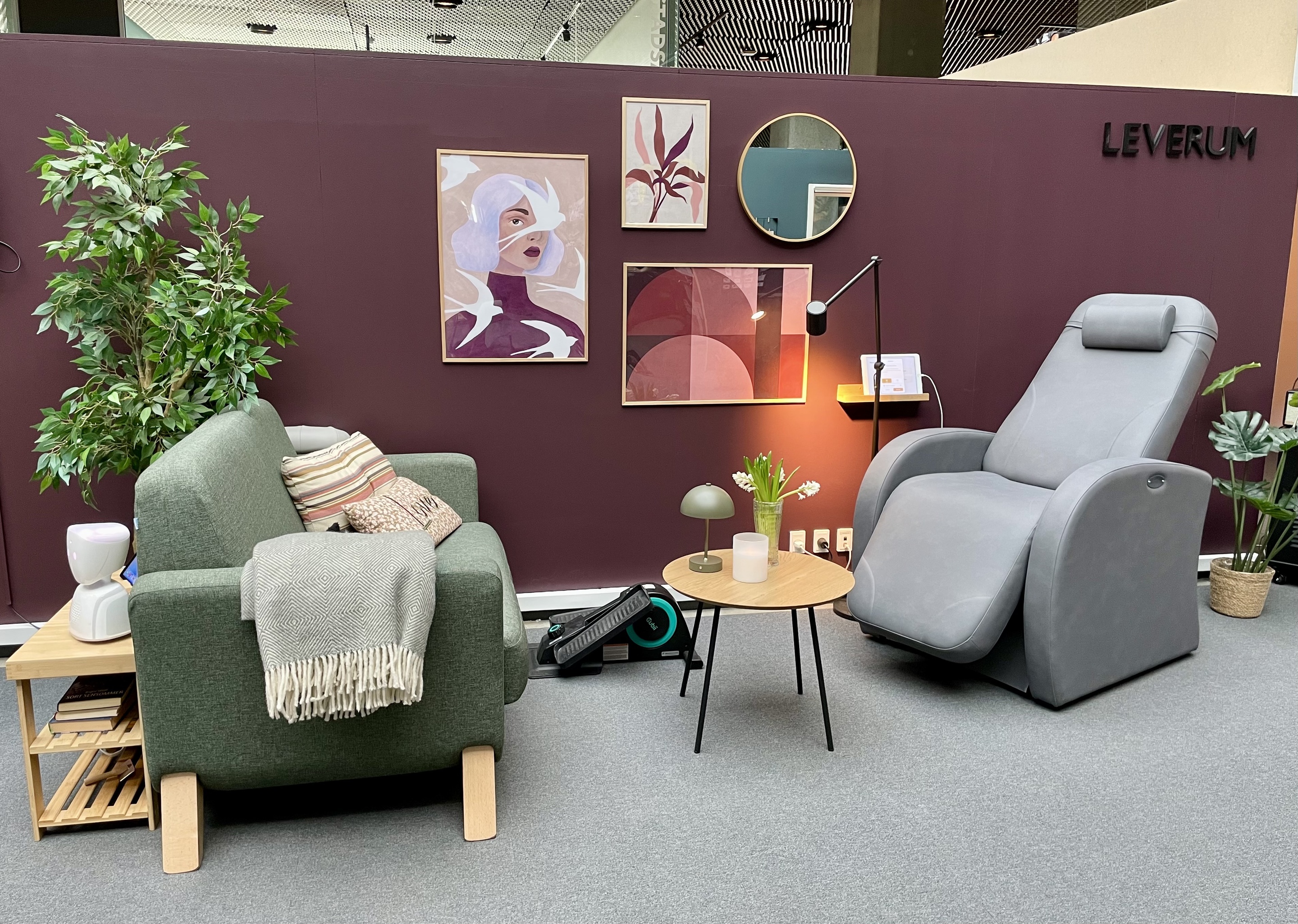

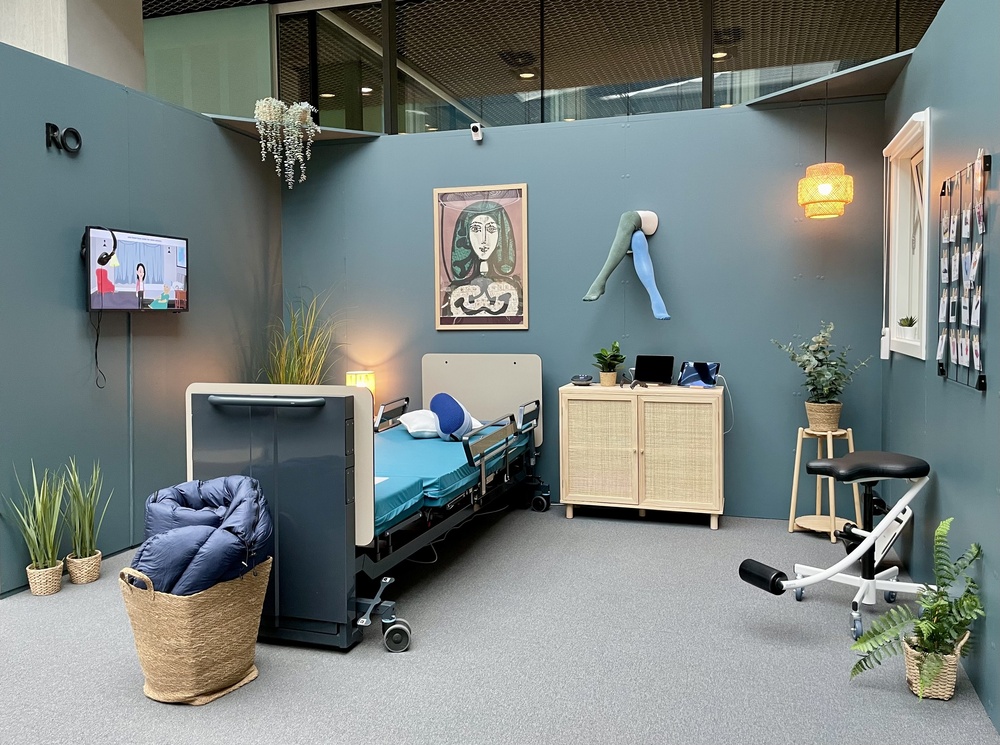
Jelly Nail Stickers: a safty solution for dementia patients in Japan
Orange Links: Bringing wandering dementia patients back home safely
Orange Links was founded in 2015 in Saitama prefecture, Japan. Director Mrs. Yukiko Yoshida developed a jell nail sticker sporting a QR code with an identity verification system. Wandering patients wearing the sticker can quickly be identified by passers-by using a smartphone.
According to the Federal Office of Public Health (BAG) around 153 000 people in Switzerland live with dementia. Most of these people live at home and are taken care of by family members and other close persons. Wandering, can mean a high burden and stress for all people involved. In comparison to other means of identification, such as GPS devices, stickers on clothing or keychains, which can be forgotten or removed, the jell nail sticker offers a low-tech, low-cost and failproof method to identify wandering people. The product won the Grand Prize in “Technology and Innovation” of the Asian Health and Longevity Innovation Awards 2022. In a written interview with Kazuhiko Sugimoto, the brother of founder Mrs. Yukiko Yoshida, we learn more about this product.
Institute for Ageing Research (IAF): Mr. Sugimoto, could you tell us more about how the project started?
Kazuhiko Sugimoto (KS): An acquaintance of Mrs. Yoshida’s with dementia was found 20 km away from their home after having wandered away with a bike. At first everyone was surprised at why the fatigued person had erred so far, but it turned out, the place where the person was found, was near their old working place. Mrs. Yoshida, at the time a fan of stylish nail stickers, came up with the idea of making a QR code nail sticker with an identity verification system to identify wandering people with dementia and contact their close ones.
IAF: Where there any difficulties in developing the product?
KS: As we are originally into IT consulting and developing, we had no prior knowledge of the care-sector. For around one year, we emersed ourselves into nursing homes, dementia hospitals, the Japan college of social work and community centers to gain a better insight into the field.
IAF: How does the product and technology in general contribute to the lives of older people?
KS: On a general level, we believe Technology is one of the tools to reach the Sustainable Development Goals set by the United Nations. In relation to our project, we relate to the SDG 3 “ good health and well-being” and SDG 11 “sustainable cities and governments”. Further, statistics show, that even if families pay close attention to a relative with dementia, it still happens that people with dementia wander away. Using the QR sticker, relieves the family of stress.
Here are other reasons why we believe the product contributes to the lives of people with dementia:
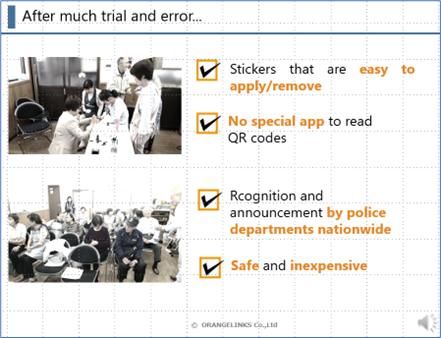
IAF: Where is the product sold and is it available outside of Japan?
KS: The product is sold in city halls and nursing homes throughout Japan. We would like to expand primarily in Asia and, in a second step, also in Europe. We work with local partners in each country. For example, we have contacted a dementia organisation in South Korea. Such an organisation is needed to distribute the product locally and we would also be happy to be contacted by organisations and companies in Europe that want to help us with this goal.
The product is available in different languages. Go ahead and scan the QR codes below, to see different language versions:

Interview, Text and translation: Rhea Braunwalder,
llustrations: Orange Links
Further Reading FR:
Jelly Nails FR

Joy for All: Robotic cat for older adults
A conversation about “Joy for all” and other technologies used in the field of ageing
Each year the consequences of social isolation are associated with an additional $6.7 billion in health care spending in the United States of America - comparable to spending on arthritis, heart disease, high blood pressure and diabetes. An award-winning initiative in the US is delivering robotic pets to isolated older adults across New York State. We spoke with Josef Huber, an expert in age-technologies, about the “Joy for all” cat and other innovations. He shared a comprehensive insight into the challenges and opportunities in implementing technologies that can provide a sustainable and positive impact on the lives of elderly people.
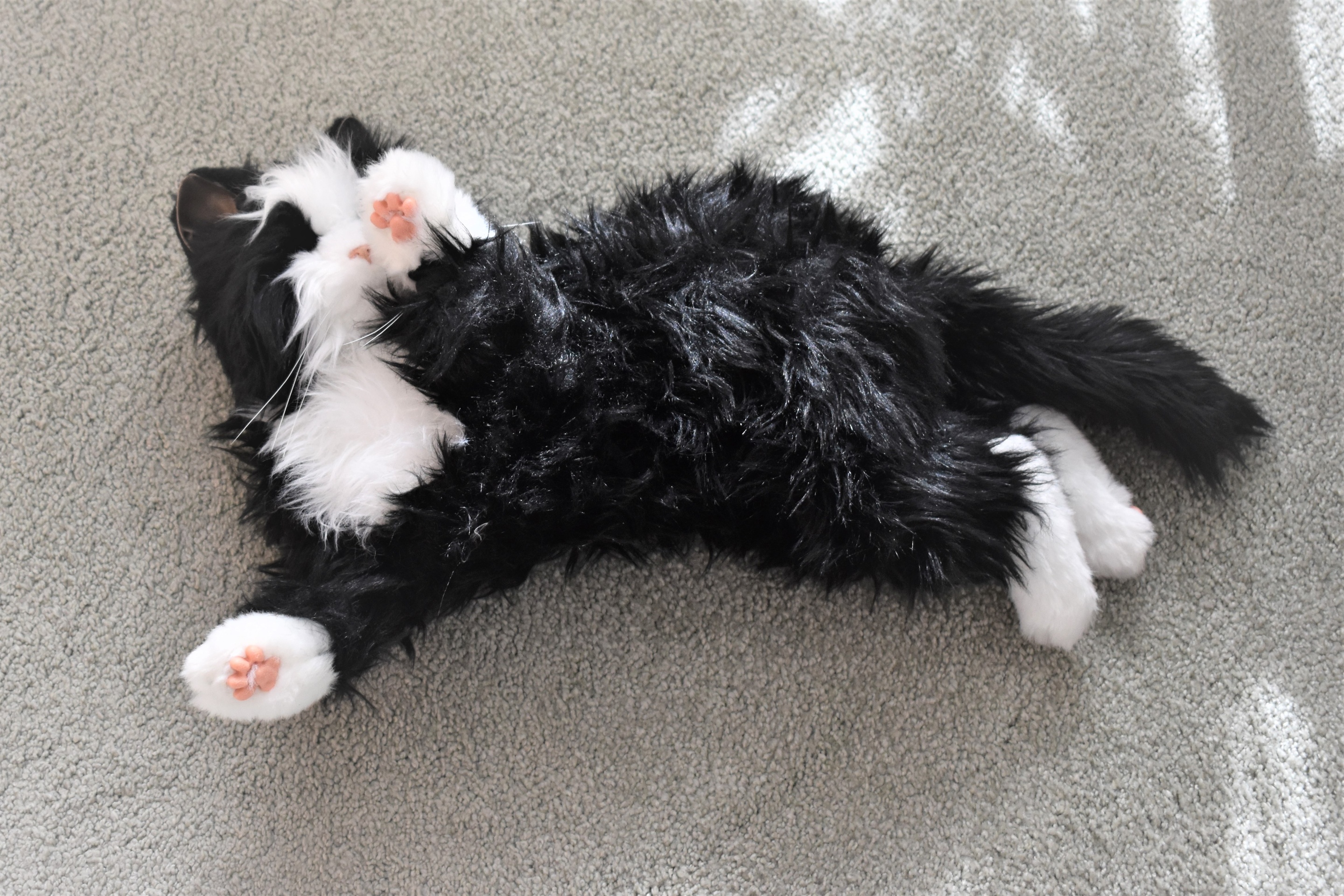
Robotic pets have long been successfully used in various therapies, particularly in improving the cognitive abilities of individuals suffering from Alzheimer's or other forms of dementia. The NYSOFA (New York State Office for Aging) pilot program has shown that these pets positively impact the health and well-being of older adults on a broader level. During a pilot program in 2018, 60 individuals in 12 counties received animatronic pets through their respective county's Office for Aging. By applying the DeJong Loneliness Scale at various points during the project, it was found that 70 percent of these older adults experienced a (sometimes significant) reduction in loneliness and a 75 percent decrease in pain. Therefore, the project is being continued and expanded.
Josef Huber, head of SimDeC (Simulation in Dementia Care), is familiar with various technologies designed to help people of advanced age live independently in their own homes. “Joy for all” has also found a place in his showroom. The robot cat does not excite Josef Huber personally, as he is “not a cat person”, but he has observed many people who enjoy playing with it. In his research, this animatronic pet serves more as a catalyst for discussion and aims to promote an ethical discourse on the use of technology. By using a hand puppet as an alternative means of communication, efforts are made to simplify the dialog on such topics and break down inhibitions: “We want to encourage people to say: it is not important to understand exactly how the technology works, but it is important to see what impact it has.” His personal experience with the robotic cat makes it clear that its appealing appearance not only brings positive reactions, but also some challenges. Although it evokes positive responses in elderly people, and seems to create a certain emotional bond, it is noted that it does not meet all expectations in terms of haptics. Interestingly, some people refuse to turn off “Joy for all” because it feels “like killing the cat”, says Josef Huber.
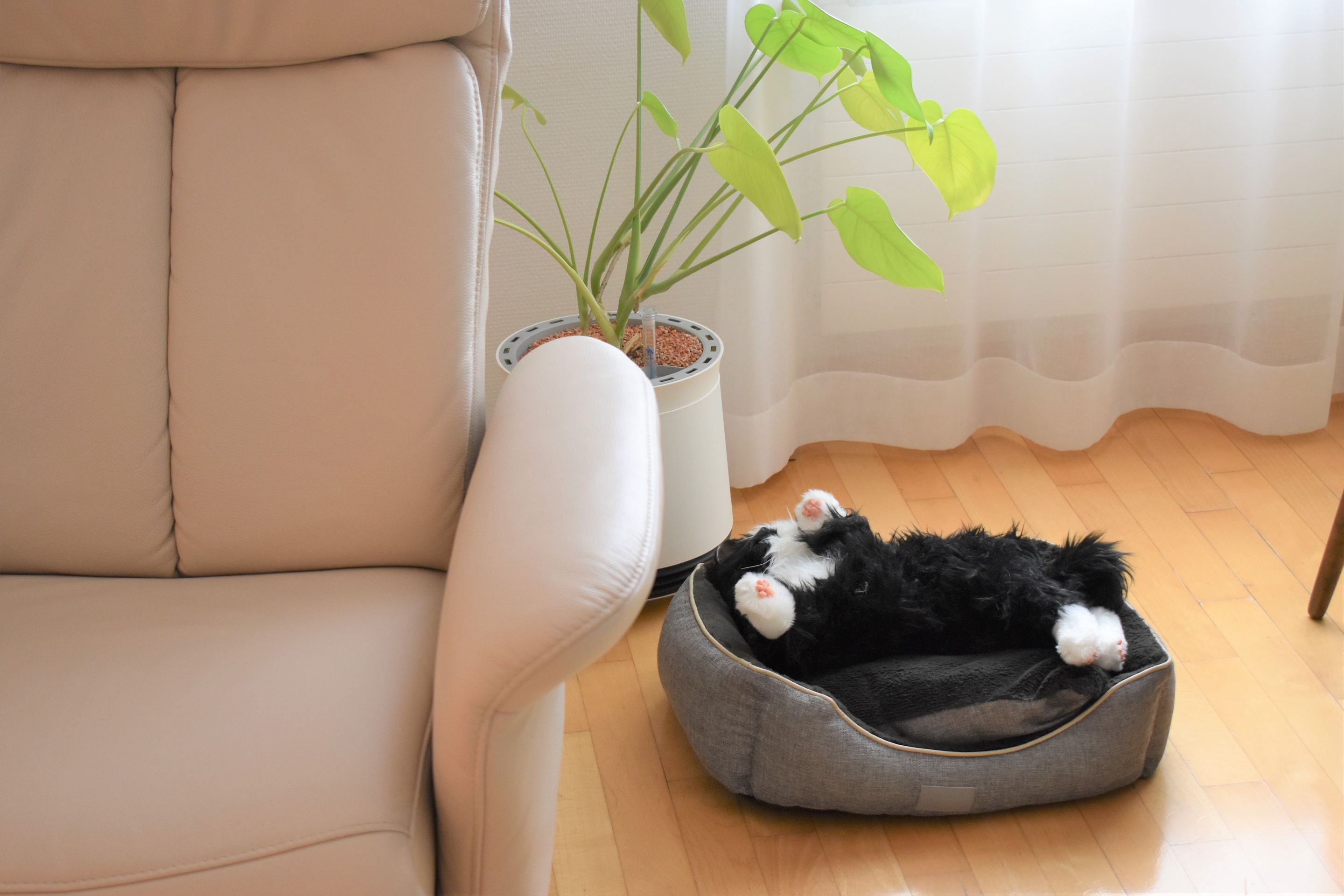
Mr. Huber reflects on the practicability and role of technology in the field of ageing: “Technology or engineering? When we talk about electronics, we must start extrapolating: What does that mean in terms of energy? What about data? What opportunities and risks do we need to consider?” The expert sees great potential in the little things that can make everyday life easier and in individualizing offers based on needs analysis (e.g., customized pepper mill). He emphasizes how crucial it is to understand the specific requirements of older people and wants to highlight “the everyday added value of technology”. He justifies his opinion: “These needs remain the same. Technology, on the other hand, has very fast innovation cycles, it changes all the time. If we talk more about needs, then we can also master the complexity of technology. And these are the common themes that run through my work. I want to tell stories and thereby learn more about needs. A person after a stroke has completely different requirements for a bottle opener than a person who is blind or in pain. And that's where it becomes interesting to develop technology further”.
Just like other technological solutions, “Joy for all” can make a significant contribution to the field of ageing. However, these technologies must be used in a way that is beneficial to people's daily lives and/or tailored to their needs. For example, a person who does not like cats is unlikely to be pleased with this robotic solution. The comparison of different technologies - including more expensive alternatives to the robotic cat such as the robotic seal “Paro” - underlines the importance of personal choice and acceptance. Another issue is the negative connotations associated with the use of assistive devices. One does not want to be seen as “old” or “helpless”. “We need a stigma-free access to technical solutions”, says the experienced lecturer. In the context of accessibility, Josef Huber talks about his Citizen Lab with the Innovation Center for Participation (simdec.ch/page/izm) as an innovative initiative to bring objects into the neighborhoods together with a story. This allows local recognition of needs in the population and offers advice from various perspectives. “SimDeC is a place where we can meet. (...) We have space here for people to meet at eye level to discuss technology. Our mission is to convey which technical products, and more specifically which needs there are and how we can deal with them through technology or other assistance options to enable “Age(ing) in place”, sums up Mr. Huber.
Interview, Text and translation: Monika Freund Schoch
Further Reading (EN):
NYSOFA Delivers Animatronic Pets to Older Adults in the North Country | Office for the Aging
Further Information about SimDeC:
SimDeC
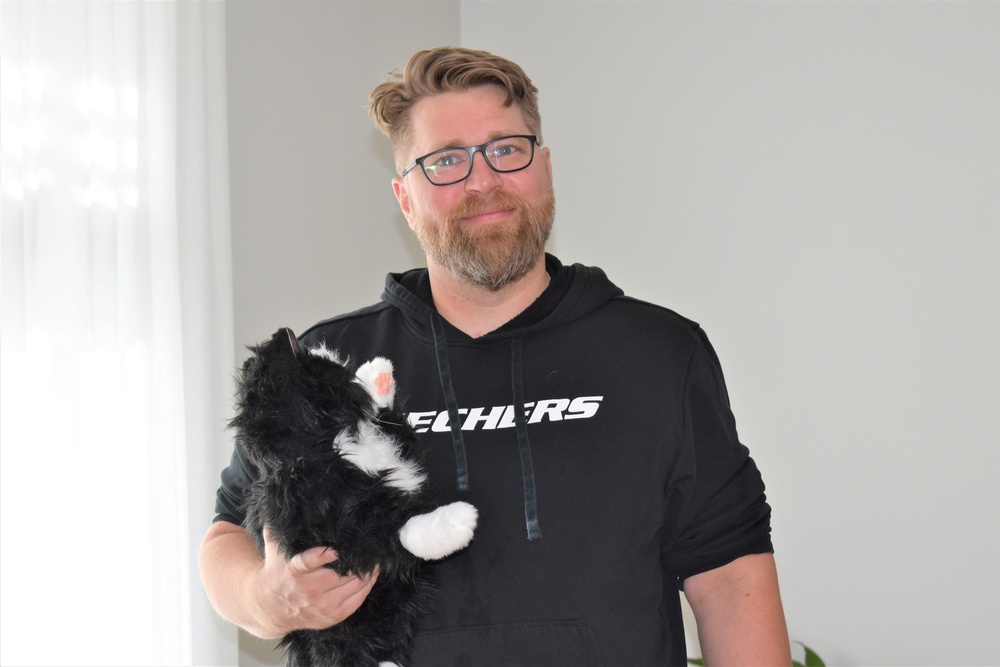
Livy Care: Digital Assistance for the Healthcare Sector
An Interview with Ali Reza Humanfar
In an increasingly digitalized world, the care sector is also becoming more and more permeated by innovative technologies. One proven example of this is Livy Care, a digital assistance system designed to support care staff and increase the safety of people in need of care. Ali Reza Humanfar, developer and mastermind behind this project, provides insights into the history, challenges and future plans of Livy Care.
Livy Care was developed to meet the growing demands in the healthcare sector. “Livy Care is a digital assistance system primarily aimed at supporting healthcare professionals and enhancing the safety of those in need of care,” explains Humanfar. The idea was born out of a personal experience when his father suffered a stroke after several heart attacks. This family challenge led Humanfar, as an engineer, to think about technical solutions that could provide quick assistance in emergencies and inform relatives.
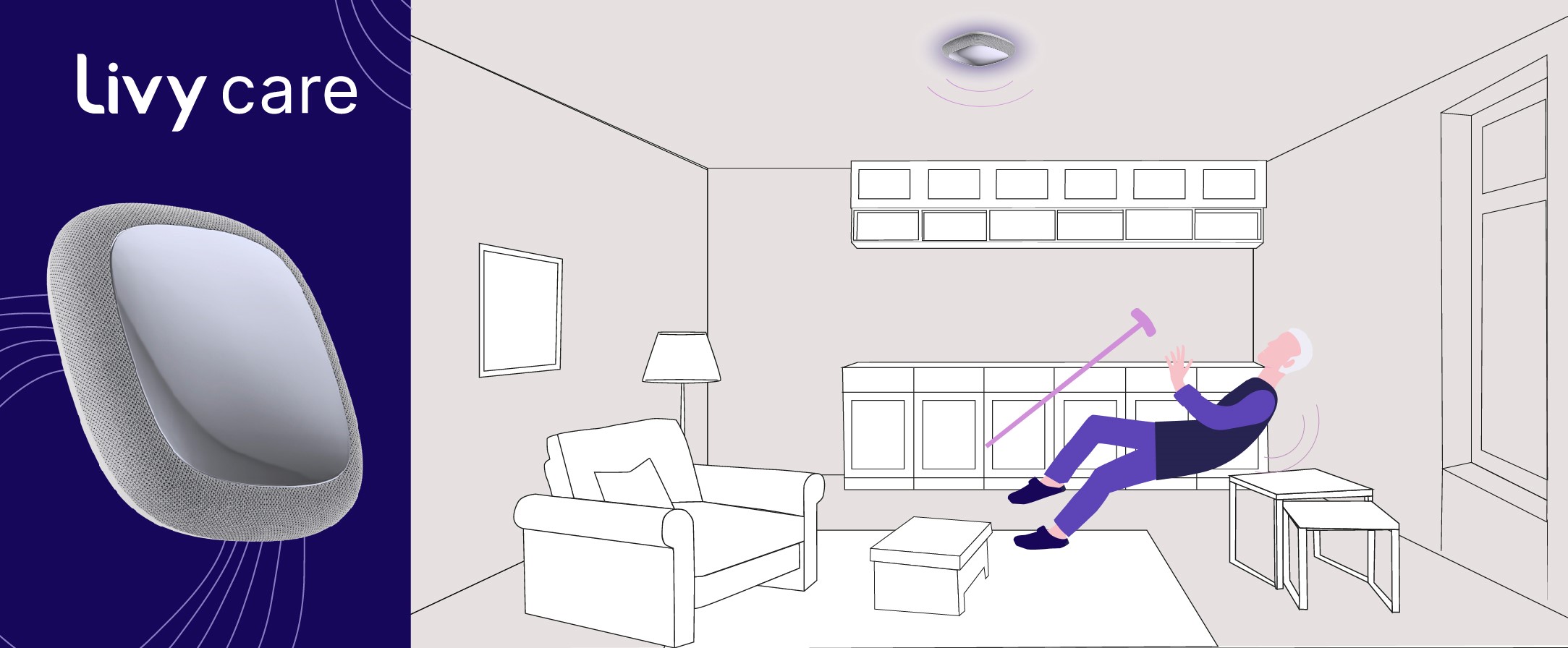
Developing a Revolutionary Technology
The journey from idea to finished technology was long and challenging. Humanfar began his initial considerations as early as 2010, but it wasn't until 2020 that his work in sensor technology led to the development of Livy Care. “We used sensor fusion to combine various sensors, ensuring precise and reliable monitoring,” he explains. Sensor fusion, a principle from autonomous driving, allows Livy Care to maximize the strengths of individual sensors and compensate for their weaknesses by combining sensor data.
Challenges in Development
Developing such a complex system brought numerous challenges, particularly the issue of false alarms. “We wanted to develop a solution that does not produce false alarms,” emphasizes Humanfar. It took about two years to develop hardware that could optimally combine the various sensors. In parallel, intensive work was done on the software, which reliably detects dangerous situations using machine learning, reducing the false alarm rate to less than one percent.
Involvement of the Target Group
During the development of Livy Care, the team placed great importance on involving the target group. Elderly people and healthcare facilities were integrated into the process to ensure that the technology met their specific needs. “We conducted many interviews to precisely identify the niche and market segment,” explains Humanfar. Particularly in the area of night shifts in healthcare facilities, the developers saw a pressing need that Livy Care addresses.
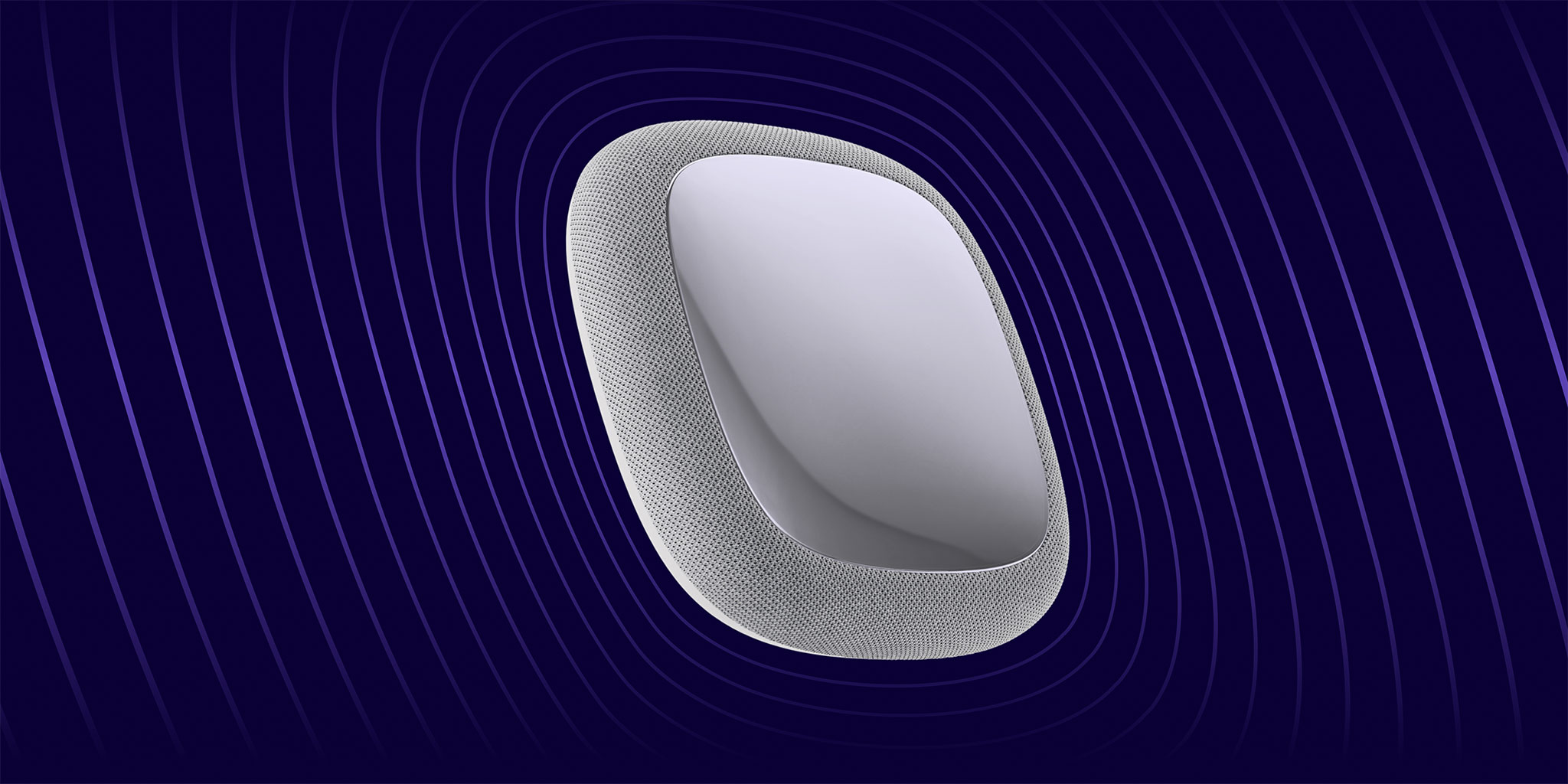
Limitations and Future Prospects
Despite the many advantages of Livy Care, there are also limitations. “One limitation is that our solution is confined to indoor areas,” Humanfar admits. Livy Care currently does not cover outdoor monitoring. However, wearables can be a useful addition, as they can be combined with Livy Care. Looking to the future, Humanfar and his team are focused on further relieving healthcare professionals. “We are working on solutions that reduce or eliminate routine tasks, allowing more time for actual care,” says Humanfar.
Ethics and Data Protection
Another important aspect in the development of Livy Care is data protection. The data is processed locally, so it does not leave the room. “This ensures the highest possible level of data security,” emphasizes Humanfar. With the support of data protection experts like Professor Dr. Thomas Jeschke and Thomas Althammer, a system has been developed that meets the highest data protection standards.
Mission
Livy Care shows how technology can help to improve the care sector and improve the everyday lives of care staff and people in need of assistance. Despite the challenges and limitations, Reza Humanfar is convinced that Livy Care can make an important contribution to solving the care crisis. “Our mission is to relieve the burden on care workers while ensuring the safety of those in need of care,” he concludes the interview.
Interview and text: Monika Freund Schoch
Translations
EN: Monika Freund Schoch
FR: Rhea Braunwalder
IT: Lisa Kortmann
With AI support
On the photo below: Amir and Reza Humanfar (the founders)
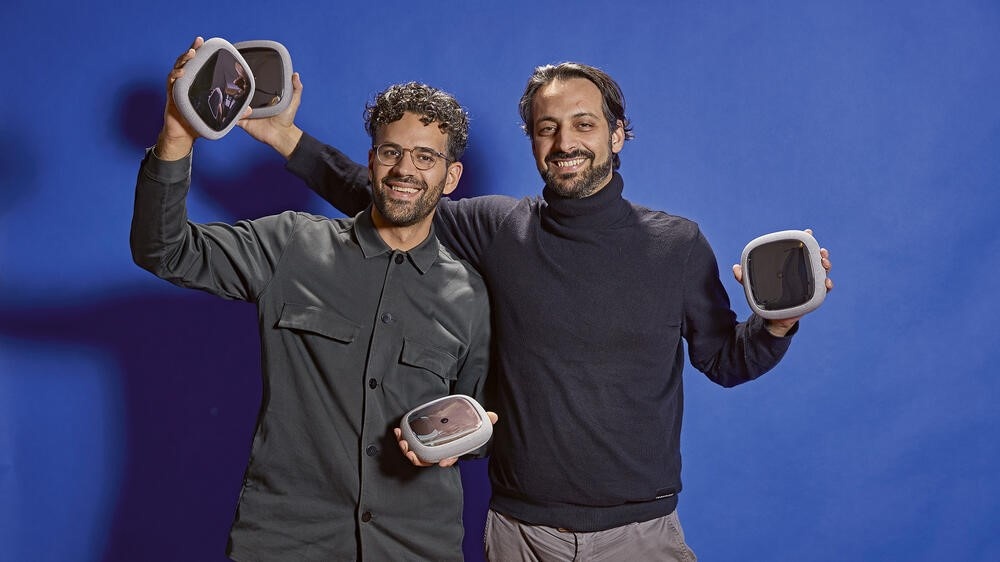
Margerite: Paving new paths through demographic change with the Swiss Age Tech Map
An Interview with the Founders of Margerite
Margerite is a young Swiss enterprise founded in 2021 by Ivan Büchi and Silvio Biaggi. Its aim is to make technologies and companies visible that help older people lead self-determined lives for longer. Their most well-known development is the Swiss Age Tech Map, an interactive platform mapping innovative solutions related to aging, as well as the Swiss AgeTech Conference.
In the following interview, Ivan Büchi discusses the background, challenges, and visions of the initiative – and how technology can support everyday life in old age.
Monika Freund Schoch: Welcome, Ivan Büchi. On your website, you present various technologies, and we’d love to learn more. But first, tell us about yourselves. You’re the founders of Margerite. What exactly do you do?
Ivan Büchi: Thank you, Monika. Silvio and I founded Margerite a little more than three and a half years ago. It all began when we started exploring the implications of demographic change and realized that there were very few platforms making this shift visible. So our goal became to raise visibility around this topic.
One of our first steps was to develop the so-called Swiss Age Tech Map. We wanted to know: What aging technologies are available in the Swiss market? So we began collecting companies and products, sorting them into clusters. We also looked at international definitions of Age Tech – for instance, from Australia, Israel, Canada, and the U.S. In some places, there are pharma-driven initiatives focused on aging. Many international approaches take a strongly health-centered or industry-specific view.
But for us, it was important to center the perspective of the older person. From that, we identified four core areas of life: everyday living, housing, health, and finances. These pillars form the foundation of our Age Tech Map.
We asked: What technologies support the key activities of daily life? For us, Age Tech includes anything that helps people live independently for longer. Based on this, we selected products, services, and companies.
Today, the Swiss Age Tech Map (Version 2) is available online. One key criterion for inclusion is a Swiss-based office. The product doesn’t have to be exclusively targeted at seniors, but a large portion of its user base should be older people. For example, with medication management – it’s not just for seniors but also highly relevant to anyone taking multiple medications daily.
We don’t differentiate between B2C and B2B offerings on the map. What matters is that there’s a connection to the end user. That’s how the map was created. We continually receive tips about new companies, which we then review. Every 2–3 months, we release an update. We’re currently working on Version 3 because space is becoming tight – more and more companies are developing age-specific products.
Monika Freund Schoch: What are your selection criteria?
Ivan Büchi: Good question. We don’t have rigid inclusion criteria – rather, we apply exclusion criteria. We don’t just include anything that runs on electricity. A non-digital product can still qualify as Age Tech – like a chair that helps you stand up, or a food-safe chemical that makes puréed food chewable again.
A great example is Emotion Food Company, whose solution reduces the risk of choking. For us, the central question is: Is this product primarily or substantially aimed at older people? Does it promote independence or support caregivers in doing so? If yes, we include it.
Monika Freund Schoch: So companies either approach you, or you seek them out?
Ivan Büchi: In the beginning, we had to actively search – no one knew about the map. Now, companies reach out to us. Thanks to growing awareness, such as through the Age Innovation Prize (see below), we receive a lot of recommendations.
Monika Freund Schoch: How did your vision develop?
Ivan Büchi: We really started focusing on the topic in late 2021. We saw interesting new products and recognized a major societal challenge. We wanted to apply our backgrounds in IT and product development positively.
The map was the first result of our market analysis. We received a lot of positive feedback – people told us: “I didn’t know this company worked in that space!” That encouraged us to keep going.
The idea for a dedicated conference followed. Because the four pillars are also industry sectors. But people often work in silos within their fields. To truly benefit older people, we need interdisciplinary collaboration. That’s why we bring them together in person.
Switzerland has the ideal conditions: technical universities, strong business schools, high innovation capacity. What’s still needed is the final push to truly establish Age Tech as a recognized domain.
Monika Freund Schoch: How do you ensure the quality of the technologies you feature?
Ivan Büchi: We don’t currently test the products ourselves. The map is a pro bono service our company offers to the sector. Full quality testing would be too resource-intensive. But we do check websites, conduct interviews, hold video calls, and write blog posts about selected products. About a quarter of the logos on the map have accompanying articles.
Monika Freund Schoch: So the map is very dynamic?
Ivan Büchi: Yes. We regularly update it. If companies disappear or their websites go offline, we remove them. We currently feature about 50 entries, with 15 more in the pipeline. Before each update, we verify which companies are still active.
Monika Freund Schoch: How do companies respond to being included?
Ivan Büchi: Most are highly interested. Visibility is especially important for startups. But we’ve also seen some companies not wanting to be labeled as Age Tech – they prefer to stay in the health sector, even though their products are clearly relevant for older users. We keep an internal watchlist for such cases.
Monika Freund Schoch: The topic of care is closely linked to Age Tech. Do you also include products for caregivers?
Ivan Büchi: Yes – we don’t distinguish strictly. Many products focus on assisting with limitations, but aging isn’t only about frailty. There are many beautiful aspects too. That’s why we also include social platforms, education offers, and programs for daily engagement.
Monika Freund Schoch: So the social components fall under the “Everyday” pillar?
Ivan Büchi: Exactly. There, we include offerings for re-engagement – like job platforms targeting retirees, or senior universities and digital learning programs. Technology can also help build bridges in social circles.
Monika Freund Schoch: Anything you’d like to share with our readers?
Ivan Büchi: This field is evolving rapidly. It’s worth staying up to date, checking the map regularly, and watching developments. In the next 3 to 5 years, we’ll see major changes – also in Switzerland. There are many exciting trends, whether in product development or how companies address older audiences.
The term “seniors” is as vague as “women” or “men” – far too broad. We expect to see much more nuanced product design emerging.
Monika Freund Schoch: One last practical question: how do you search for new technologies? Do you use specific keywords or strategies?
Ivan Büchi: No – there aren’t any search terms that reliably deliver relevant Age Tech products. We usually start with known companies and search for similar offerings. It’s about mapping and making structures visible, not drawing hard category lines.
Monika Freund Schoch: Thank you, Ivan. We’ll see you in June at the conference!
Ivan Büchi: Yes, I’m looking forward to it. On June 5, we’ll meet at Google for the second Swiss Age-Tech Conference. This year, we’re introducing breakout sessions, in-depth topic tracks, and ending with the Age Innovation Prize Award. It’ll be a great opportunity to network and discover new solutions.
Follow Margerite on LinkedIn
Explore the Swiss Age Tech Map Swiss Age Tech Map
Join the Swiss AgeTech Conference
Ivan Büchi:
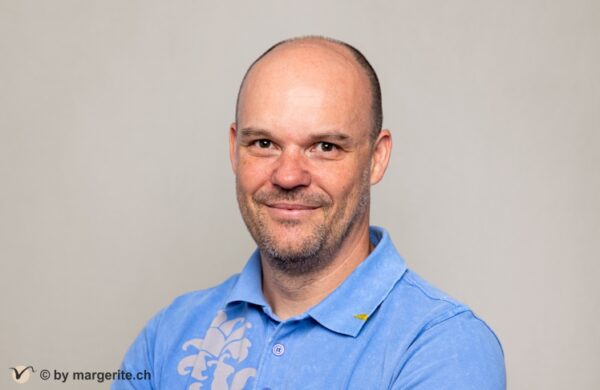
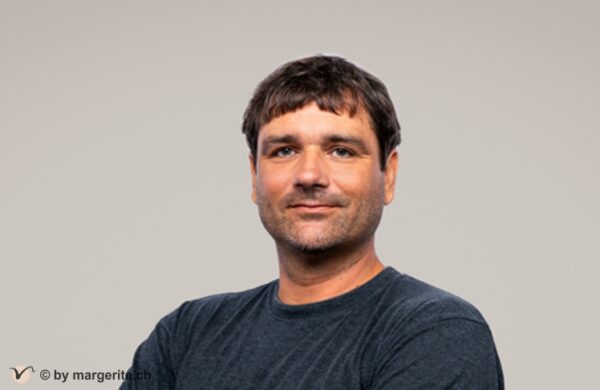
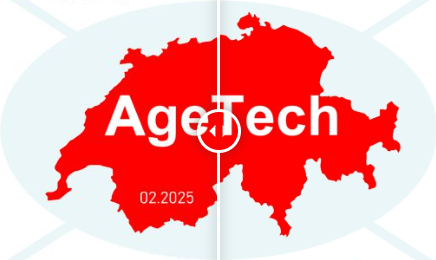
Qwiek.up: An audiovisual projector for bedridden individuals
An interview with "Quick.up" co-founder Chris Rameckers
Technological solutions can help to bridge difficult everyday situations in nursing care and make everyday life more pleasant in retirement and nursing homes. One example of this is Qwiek.up. The innovation creates audiovisual experiences for people with dementia and helps them to regulate stimuli. The product has now proved its worth for other user groups too. In this interview, Chris Rameckers, co-founder of the company, tells us about the continuous development of the product.
Team and idea behind the product
The makers behind Qwiek.up have known each other since their studies of industrial design in the Netherlands. As an industrial designer, you learn to consistently place the needs of users at the center of development processes. With this background, in 2013 Qwiek.up was launched. The aim of Chris Rameckers and his colleagues was to develop a product for retirement and nursing homes in response to residents’ challenging behavior. They created a product that offers distraction and relaxation, promotes the well-being of residents and thus supports nursing staff. The starting point was the observation that many residents of retirement homes - especially those suffering from health restrictions - often lie in bed and only see the white ceiling. This observation gave rise to the idea of simulating a skylight, where beautiful landscapes, moods from the weather or a starry sky would be visible. Such images can evoke pleasant feelings, especially when they fit into the viewer's world of experience. And this is where the topic of a technological solution came into play.
Product and technical realization
The idea behind Qwiek.up is to create a positive audiovisual experience for nursing home residents. A beamer creates an immersive experience by projecting images onto the ‘big screen’ ceiling or room wall. The system is compact and thanks to a small wheeled trolley it can easily be moved into residents' rooms by nursing staff as required. The principle of the beamer is simple. However, the preparation of appealing visual material in the form of different modules is challenging. Some modules are more calming (a walk in the woods or a visit to a farm), others are more stimulating (a visit to a concert by André Rieu). New modules are constantly being developed, always with the aim of creating suitable experiences.
Participation as a driver for continuous development
Since 2013, new modules have continuously been developed - always in collaboration with users. The modules undergo an iterative testing and development process with nursing homes, nursing staff and residents. This results in products that perfectly meet the needs of residents and nursing homes.
Qwiek.up is now not only used in the Netherlands but is also throughout Europe. While expanding the market, the creators of Qwiek.up learnt how strongly images are culturally influenced. When pictures of asphalted forest paths were shown in Austria, people with dementia were very upset because asphalted forest paths are not common in Austria. The material was subsequently adapted, and the team learnt to always create country-specific image variations on a theme. A winter walk in Switzerland must look different from a winter walk in the Netherlands.
The product was initially developed as a tool for nursing staff and primarily for distraction during unpleasant care tasks. Meanwhile, it is possible to personalize modules. For this purpose, retirement and nursing homes residents' individual footage can be used. This makes it possible for residents to immerse themselves in memories, with family members too.
Through close collaboration with end users Qwiek-up continuously develops new applications. It has been shown that Qwiek.up is also suitable for use in hospitals: in emergency departments, intensive care units, geriatric and oncology departments and also in pediatrics, when children have to endure painful and difficult treatments. Here too, Qwiek.up can provide distraction and lift spirits.
Different markets - different conditions
Chris Rameckers found that different factors play a role in the acceptance of the product in different countries. In the Netherlands, actual personal experience with the product plays the most important role. In Germany, it is very important to be able to objectively demonstrate the added value by means of scientific studies. Corresponding clinical studies have been carried out in German hospitals, which scientifically prove the effectiveness of Qwiek.up. For example, people who end up delirious in an emergency room need less medication to calm them down thanks to the use of Qwiek.up.
Outlook into the future
The shortage of nursing staff, with all its consequences, will remain a problem in the near future. Chris Rameckers and his team want to continue developing new tools to relieve carers. They are currently developing a soothing cushion. The cushion vibrates slightly (based on the heartbeat), can produce sounds, has pockets to keep the hands busy and is relatively firm. Users can press the cushion to their chest and hug it tightly. It is designed to provide reassurance in difficult situations and anonymous environments. This cushion appeals to tactile senses and therefore other senses than Qwiek.up.
Chris Rameckers and his team don't just want to develop and sell a product. They also want to be a point of contact for care homes, identify new problems and find solutions together with partners from the field. To this end, the company continuously collects topics and regularly organizes events in the Netherlands where they invite practice partners from all over the country to work together on these topics and look for solutions. However, the interpersonal aspect always remains central: «The human aspect can never be taken over by assistive tools».
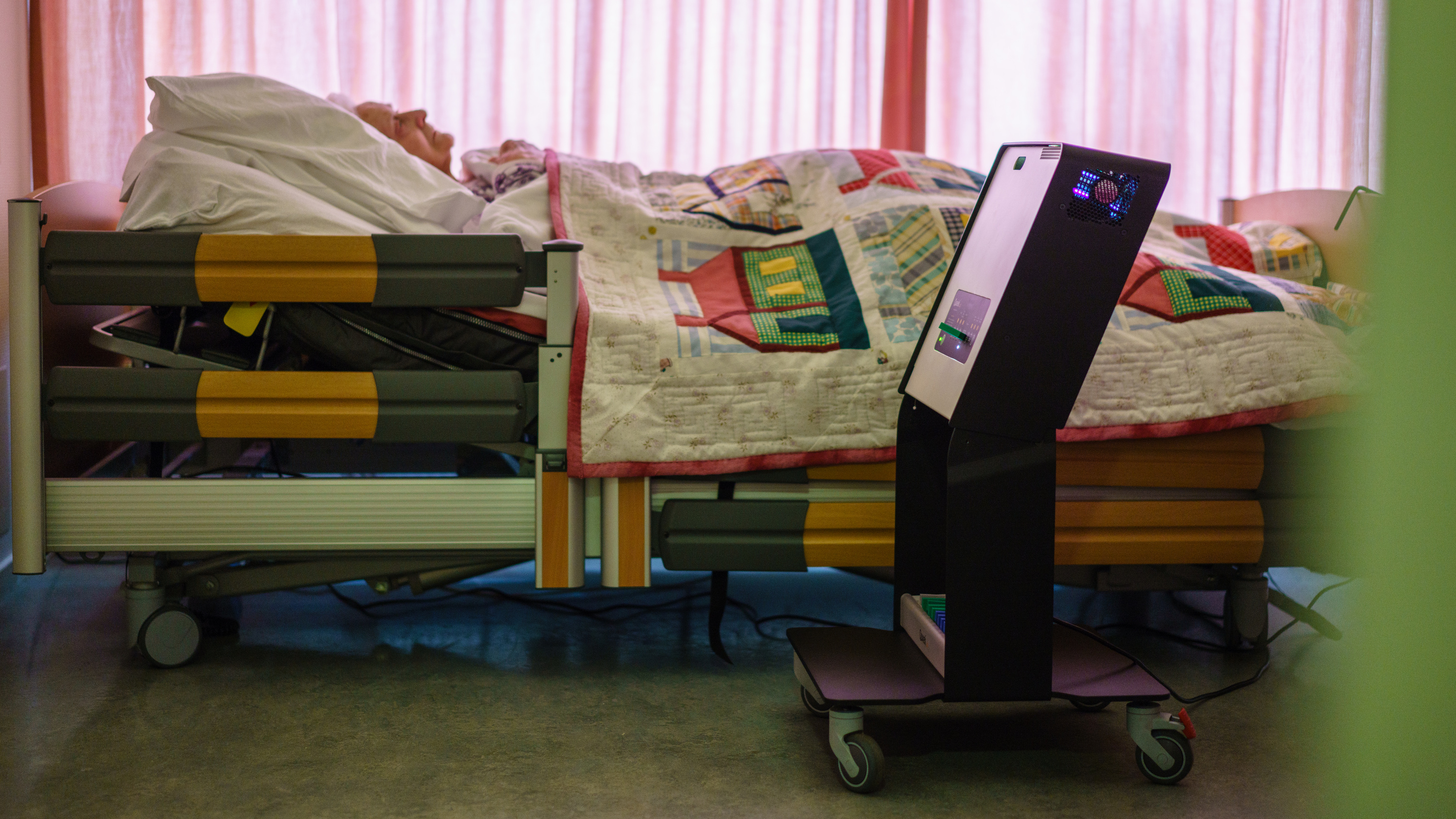

SimDeC: AgeTech must solve real problems – not just impress
Interview with Josef Huber, SimDeC-OST
Monika Freund Schoch: Welcome Josef, great to have you here. Today we’re talking about your work in the AgeTech field, particularly how you select technologies for your platform WiQQi and your living lab SimDeC. We’re especially interested in the criteria for so-called “Good Practices.” But first, could you briefly introduce yourself?
Josef Huber: Gladly. I’m Josef Huber, a lecturer at the Eastern Switzerland University of Applied Sciences in the Department of Health. I teach about technology in care across all degree programs. I also lead SimDeC, our so-called living lab in St. Gallen. There we research and develop AgeTech solutions together with citizens. We take a broad view of technology – not only high-tech, but also practical, everyday tools.
I’ve been working on the topic of “Aging in Place” for over ten years – that is, supporting independent living in old age through technology. Before coming to Switzerland, I worked in Germany, where I set up a model apartment. I’m also a founding spokesperson of the Technical Advisory Working Group within the German Association for Housing Consultation and active internationally in technology advising.
MFS: How did the idea for SimDeC and your WiQQi platform come about?
JH: The WiQQi platform was born out of a frustrating experience during research for my first model apartment in Stuttgart. I was tasked with finding a suitable stove shut-off device for assisted living. After over 40 hours of research, I realized: every other advisory center was doing exactly the same work – without knowing about each other. Everyone ended up recommending the same five providers. It was inefficient and absurd.
I thought: why are we all doing this work multiple times when we could be sharing knowledge? That’s how our citizen science project WiQQi started – a collaborative platform for collecting and evaluating AgeTech solutions.
Another key moment was a series of false alarms caused by connected smoke detectors. At the same time, another person in a wheelchair had repeatedly cooking issues due to the same smoke alarms. An electrician then pointed us to a more suitable model with a remote control – found within five minutes. Again, shared knowledge helped immediately.
Today, my brother and I run the platform voluntarily. We’re close to professionalizing it in the German-speaking world. SimDeC was founded because we realized that the topic of technology for people with dementia is underdeveloped – in both research and development. SimDeC is a place where technology becomes tangible and can be further developed – together with the people it is meant for.
With the project“DeBoo – The Dementia Booster for Your Innovation Center to Get Involved,” and with generous support from the Ria and Arthur Dietschweiler Foundation, we’re continuing this work.
MFS: What criteria are most important to you when selecting technologies – for SimDeC or WiQQi?
JH: It’s important to distinguish: In SimDeC, the living lab, we need technologies that are “publicly presentable” – they must stimulate discourse and be socially relevant. It used to be machine learning, today it’s AI. These technologies must also be communicated to society.
In individual consultations, it’s about very concrete everyday problems. Technology must be low-threshold and usable independently – without the help of a technician. A good example is the robot “Furhat,” which we initially only acquired to “show something robotic.” I chose that model because it can be programmed with Blockly – even kids can use it. In consultations, it mainly serves as inspiration and a tool to “think outside the box.”
When it comes to AgeTech, I focus on two key things:
- Relevance to society (external connection)
- Feasibility and usefulness in daily life (internal relevance)
MFS: How do you organize the selection or procurement of new technologies?
JH: For SimDeC, I focus on technologies for which I can tell a real, relatable story. That’s crucial. People aren’t impressed by technology itself, but by specific examples. If I say: “everyone over 60 needs fall detection,” that’s stigmatizing. But if I share a real success story, people understand.
In consulting, the process is more structured: I clarify the problem, goals, and available resources – which often only emerge in later conversations. From that, I develop initial concepts, define search terms, research, and bring in a broad range of possible solutions. Through dialogue, we figure out what truly fits.
MFS: How exactly do you conduct your research?
JH: I’m a very visual person. First, I write the problem and potential solutions on a piece of paper. Then I start researching – primarily through Google image search. Images tell me far more quickly than text whether a technology might be suitable.
I also search intentionally across countries – Switzerland, Germany, and Austria have different market access and offerings. International search terms broaden the field further. Exchanges with colleagues also help – though often with a delay.
MFS: Do you use AI-powered tools?
JH: No, not actively. I’ve tried ChatGPT and Gemini, but I don’t see much added value for my type of research. Language models work with commonly used terms – I find those faster with classic search. Also, the energy consumption of AI queries is significantly higher, and for me currently not justified by the outcome. That’s my take, at least based on having Gemini generate link lists. AI still lacks the contextual knowledge that citizens have shared with me. With that context – which we’re working on – AI will surely be a big help in the future.
MFS: Do you work with standardized evaluation methods or quality standards?
JH: No, not in the traditional sense. There are recurring themes – like battery replacement. Many devices fail in practice because of users’ motor issues, incompatible plugs, unclear symbols. But what’s unusable for one person might be perfect for another – depending on the context.
For instance, a tube squeezer was rated poorly by one person and described as “the best solution ever” by another – because they knew how to use it correctly. So, there are no universally good or bad solutions – only those that fit the need or don’t.
If a technology solves a problem, delivers the desired effect, and fits the person – it’s suitable for me.
MFS: Would you describe the technologies shown in SimDeC or on WiQQi as “Good Practice”?
JH: No. In consultations, I often consider 20 possible solutions – only one fits. The others aren’t bad, they’re just not relevant in that specific context. “Good Practice” only exists in individual cases, not generally.
One example: I used to think it was essential for a cordless vacuum to stand on its own. Today, I see that many people use it differently – briefly for cleaning, then store it away. A replaceable battery turns out to be more important, as batteries fail. The evaluation of technology changes with real-life use. Stories illustrate context, and suitability determines whether something is truly good.
MFS: If someone wants to regularly present a selection of helpful technologies – how should they go about it?
JH: I’d align with the major societal challenges: loneliness, mobility, nutrition, sense of safety. Then analyze: what AgeTech solutions exist for these areas? Which are innovative, current, and relevant?
And then: tell stories. Interviews with developers about how their products came to be. What was the starting point? What problem does it solve? That creates connection. Technical details can be on the product page – the key question is: why should I care?
Many AgeTech databases have one central flaw: they ignore context. Technology alone says nothing – only in real-life application does its usefulness become clear. That’s why we need lived experience, not just catalogs.
MFS: Thank you, Josef – for this fascinating conversation!
*On the picture: The sample apartment SimDeC in St. Gallen
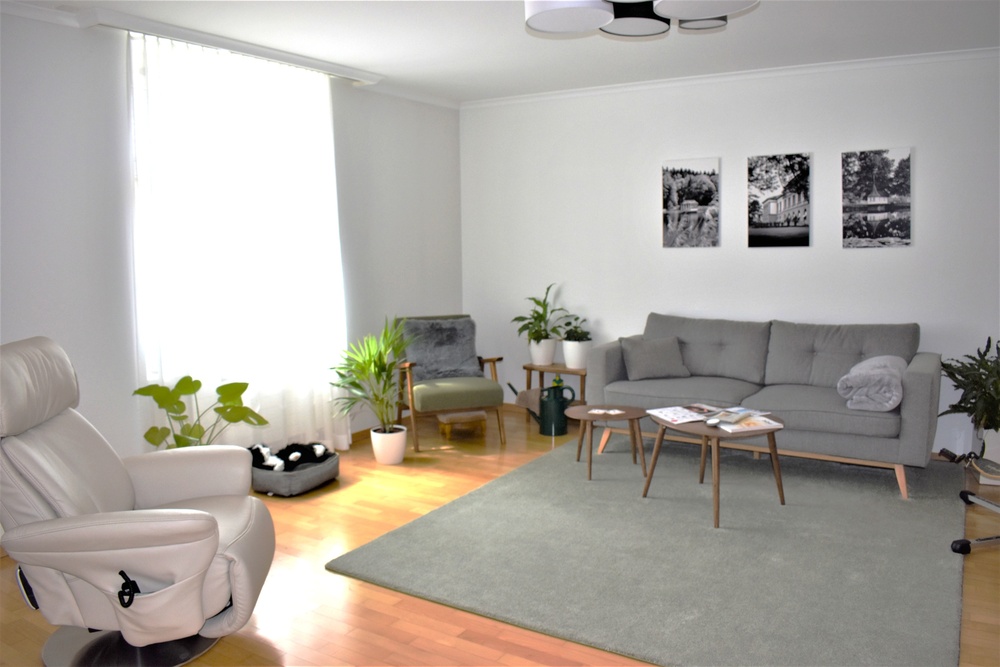
Podcast Appearances
WeCareTech: Between Vision and Reality. Is Care Robotics Failing in Practice?
In an episode of WeCareTech, host Amir Humanfar spoke with Simone Eicher, Head of the Competence Center for Technological Innovation and Aging at OST University of Applied Sciences, about the opportunities—and especially the challenges—of innovative robotics.
The conversation offers insights into the present and future of caregiving, focusing on the following topics:
- Why robots often fail in practical applications
- The ethical challenges in deploying robotics
- How technologies must be developed in collaboration with humans
- And what the future holds…
Watch this episode on YouTube. DE
The episode is also available on Spotify and Apple Podcasts.
Deutschlandfunk: Staying Young with AI (DE)
In the latest podcast episode "AI for Seniors", Cornelia Ursprung (IAF) talks with Carina Schroeder about the ongoing project "Alfred", in collaboration with Wohnen am Singenberg, the Ortsbürgergemeinde St.Gallen, and Altertainment. Starting at minute 15:55, the conversation touches on various topics, including the unique aspects of research into artificial intelligence (AI) and older adults, technological challenges in retirement and care homes, and first insights into testing the innovative AI companion, Alfred.
The episode offers valuable and insightful perspectives on the use and implementation of artificial intelligence in the senior sector. The episode "AI for Seniors – How Artificial Intelligence Helps You Stay Young" is now available on multiple platforms, including Deutschlandfunk, ARD Audiothek, Spotify, Apple Podcasts, and Amazon Music.
